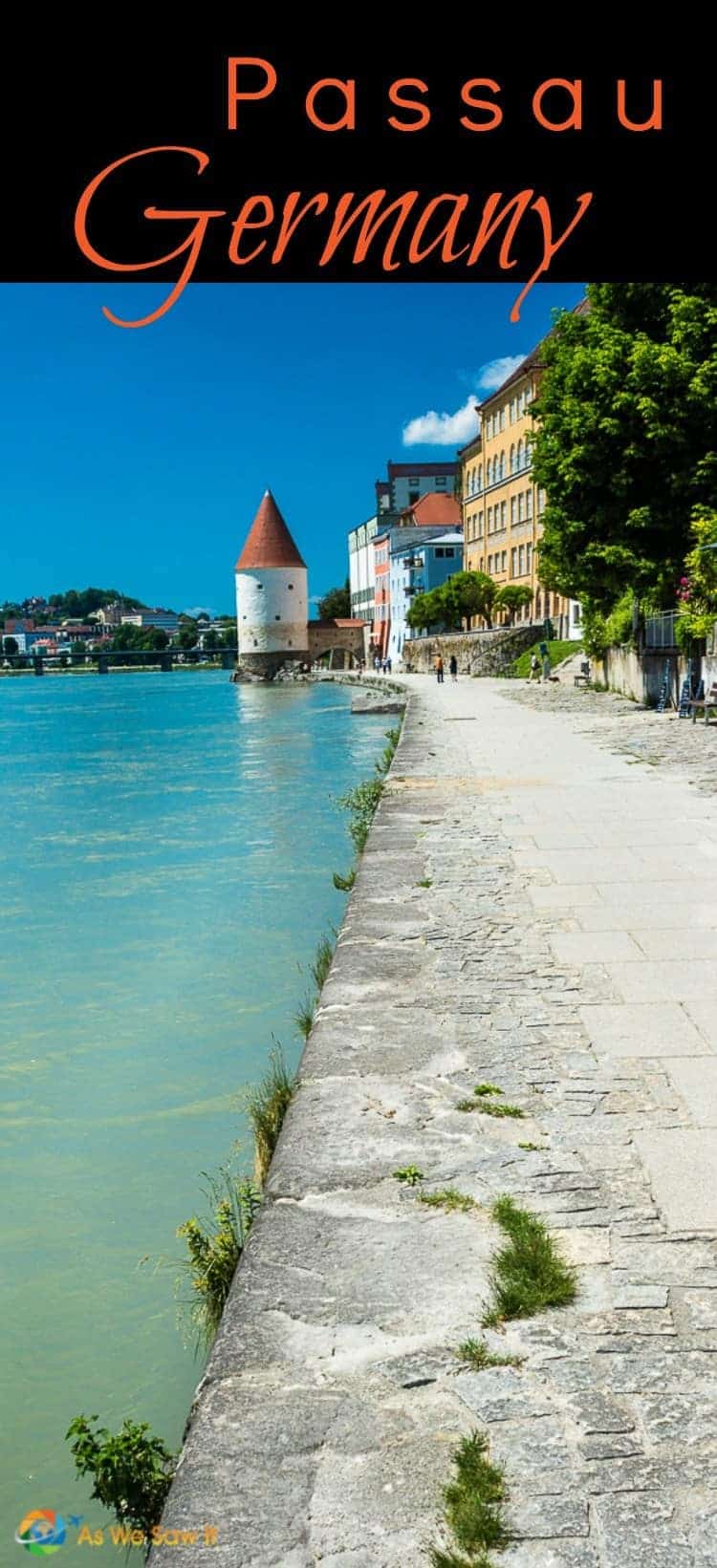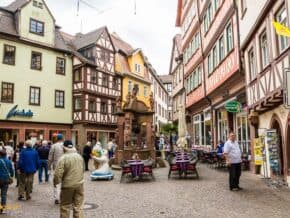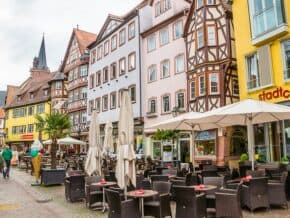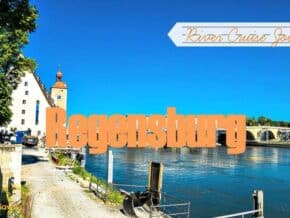Some time while we were sleeping our cruise ship crossed the Austrian border into Germany. The watery view that greeted me from our balcony this morning was rather fitting, because today we were going to visit Passau, Germany. Its nickname is Dreiflüssestadt, City of Three Rivers.
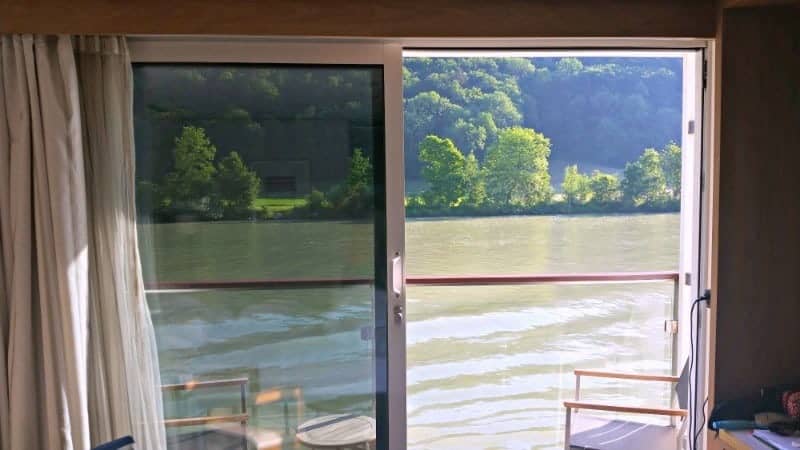
To be honest, we had never heard of Passau until we read the cruise itinerary, but now we were looking forward to it. Water has quite literally shaped the picturesque town. The city has the unique distinction of being located at the confluence of three rivers: the blue Danube, the green Inn and the black Ilz.

Our Passau tour begins
Bragi conveniently docked next to a small park on a point only a few meters from where the three rivers met and our tours began right there.

Corpus Christi day in Passau
Our tour guide began by telling us that all the stores would be closed today because of a religious holiday called Corpus Christi. It’s a huge deal in Catholic Bavaria, a special feast day dedicated to the Holy Eucharist (Corpus Christi means body of Christ.)
The highlight of the holiday is a huge procession through the streets to the church, with street after street lined with birch saplings. Sure enough we saw birches everywhere.

It wasn’t long before we heard a megaphone chanting words in German and a procession approached from around a corner.

The whole time they walked, the priest would intone something liturgical, and then the people responded just as they would in church.

Many of the people were carrying flowers, many were smiling, and all were dressed in their finery.


Our entire tour ended up being a mega detour, rerouted from our guide’s usual path in an effort to avoid the tangle of celebrants.
We managed to do that pretty well … until we got to the town’s main square, where the crowds were gathering around a statue of Mary to celebrate.

We stood for quite a while, watching, before moving on. It was really nice to have an opportunity to see something special that was a true part of their culture, rather than a display created for just tourists.
Walking around Passau
Passau dates back to the eighth century and our guide focused our actual tour on the city's Medieval town center, where most of the history and interesting sights are.

Despite the town's age, few medieval buildings remain. Many half-timbered towns have succumbed to fires, and theirs destroyed much of the city during the 17th century. Baroque was in vogue then, so the ruling Prince-Bishops, very wealthy, powerful, and independent of the emperor, decided to rebuild the city in that “modern” style.

Passau has been through a lot
No matter where we went in town we saw markers on various buildings. They were graphic reminders of the apocalyptically high levels of the numerous floods that occurred when all three rivers rose at the same time. Some of them date back to the early 16th century, but one of the worst floods in the city’s entire history occurred in 2013 when the water levels reached 12.85 m (42.2 ft).

It's precisely because of those floods that Passau has an especially vibrant artist community. Many artists have taken up residence in ground floor flats because they are inexpensive and easy to clear out in the event of a flood.
An interesting side note: The ground-floor flats are well sealed. When an inundation is inevitable, homeowners will flood their ground floor with fresh water. It's easier to clean up fresh water damage than it would be if everything had been contaminated with dirty river water.

Besides a slew of epic floods, old town Passau has endured Romans, Charlemagne's troops, the crusaders, the Turks, and Napoleon's legions. But these days, neither the floods nor Passau’s history is what it’s most known for.
Not-to-be-missed sights in Passau
Believe it or not, this seemingly insignificant town is home to a number of unique sights. Three of the most notable are:
- Veste Oberhaus – an 11th-century fortress that once was the stronghold of the prince-bishop of Passau. Nowadays it houses a museum, hostel, restaurant, and open-air theater.

- The Glass Museum – More than 30,000 pieces of glass from the last four centuries are on display, with a special focus on 19th Century and Art Nouveau styles. (We didn't go. We'd seen enough glass in Venice.)
- Saint Stephen's Cathedral – this church houses the world’s largest cathedral organ. (With 17,774 pipes and 233 registers it is actually the fifth largest pipe organ in the world!) The rest of the church is just as impressive as well.

Free noon concert at the church, daily!
Most river cruise passengers are able to enjoy a free noon organ concert, which is held at the cathedral daily, except for Sundays and religious holidays. Thanks to Corpus Christi, we were out of luck though, so as soon as the tour ended we returned to Bragi for lunch then walked back into town to explore the narrow pedestrian streets and waterfront for a few hours.





One pre-Baroque church has an especially remarkable sculpture above its entryway: There, the archangel Michael stood, with a spear and his foot atop Martin Luther's head. That's a graphic political statement if ever I've seen one!

Back on board
Bragi set sail for Regensburg at 3:30. The rest of the day was free to enjoy however passengers wanted. Us? In lieu of hearing Captain Oliver discuss all things nautical in the lounge, we chose to rest our very tired feet with a much-needed nap.
After dinner, we joined our new friends in the lounge for an evening of music and dancing. What a great day it had been.
Next stop: Regensburg.
